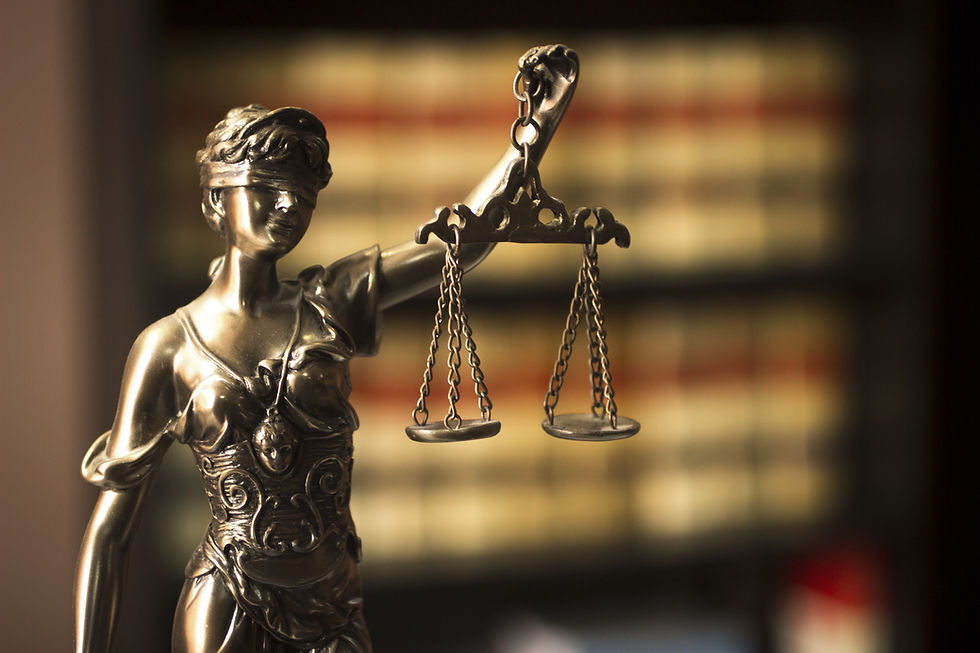#1: Intro to Mock Trial
- Project Make a Statement
- Dec 21, 2020
- 3 min read
By Charlotte Combe, Make a Statement Curriculum Team Member
What is Mock Trial?
Mock trial is an activity that simulates the structure and content of a real criminal or civil trial with student attorneys and witnesses. In a mock trial, there is a prosecution and defense team as well as a real judge and jury that evaluate the round. Around 2-3 months before a tournament, competing teams will receive a case packet with evidence for both the prosecution and defense to use through witness statements or exhibits.
What does a Mock Trial round look like?
Every Mock Trial round begins with opening statements from both a prosecution and defense attorney. The prosecution always presents their side of the case first.
After opening statements, the prosecution presents their case. Prosecution attorneys will conduct direct examinations of their 3 witnesses and defense attorneys will cross examine them.
After the 3 prosecution witnesses have testified the prosecution will ‘rest their case’ and the defense will have their 3 witnesses testify. Again, the defense attorneys will direct their own witnesses and prosecution attorneys will cross them.
The trial concludes with closing arguments. The prosecution will present their closing argument first followed by the defense. The prosecution is also able to give an extemporaneous rebuttal after the defense closing.
Direct and Cross examinations
Direct and cross make up the bulk of a trial and are crucial to communicate all of the important evidence and testimony of the case to the jury.
Direct Examination:
Between a lawyer and witness on the same side of the case. Because the lawyer and the witness are on the same team the direct examination is scripted and the lawyer and witness will practice it together before the tournament.
The attention is on the witness and their testimony; the lawyer asks open ended questions to guide them through a chain of events
Designed to provide key context and evidence to the jury from either the prosecution or defense
Cross Examination:
Between a lawyer and witness on opposite sides of the case (ie a defense lawyer will cross-examine a prosecution witness)
The attention is on dismantling the credibility of the witness; lawyers will ask short leading questions (questions that suggest an answer of yes or no) to poke holes in the testimony of the witness
Opening Statements and Closing Arguments
Opening Statements:
Designed to introduce the jury to the case from the perspective of your side (prosecution or defense)
An opening should provide key context to the crime or civil dispute the trial is about. Lawyers should explain what the defendant has been charged with and what they have the burden to prove or provide reasonable doubt to.
Openings will also use conditional language to prescribe doubt onto the case theory of the opposing side (ie “The defense may tell you that the defendant was home on May 15th, 2018 but in actuality you’ll hear from Detective cooper today that phone records show he was not.”)
Closing Arguments:
Designed to synthesize the most important information from the trial to the jury to argue for your teams verdict (usually guilty or not guilty)
Because the closing argument is given after the jury has been presented with all the evidence there is no need to use conditional language
Witnesses
There are 2 types of witnesses; expert witnesses who provide information that requires specialized knowledge (ie forensic scientists) and character witnesses that provide anecdotal evidence
Witnesses work closely with their lawyers to create an engaging character for their performance during direct and cross examinations
The factual testimony of witness is bound to their witness statement from the case packet
Link to these images: https://www.instagram.com/p/CGYSmYAMV7i/?utm_source=ig_web_copy_link












Comments